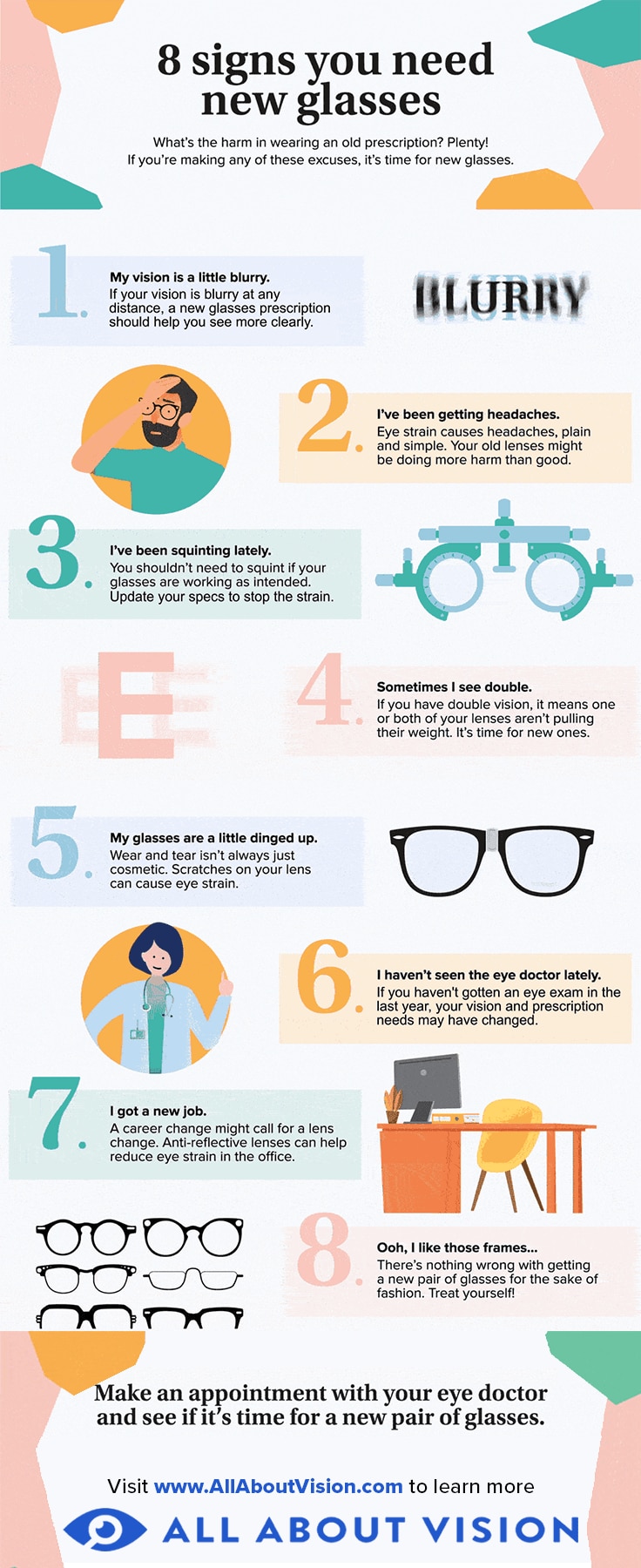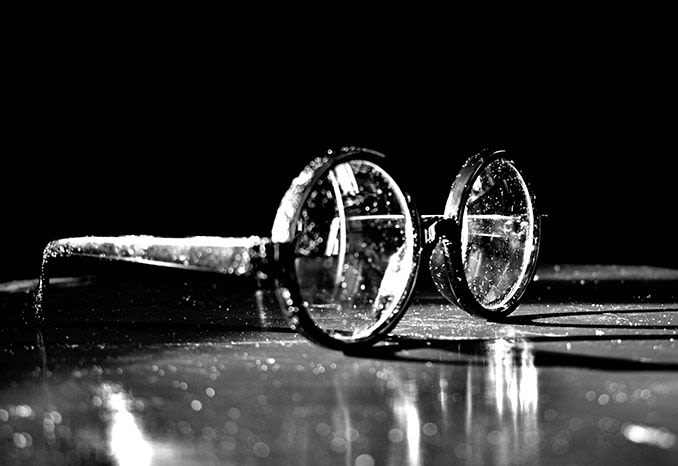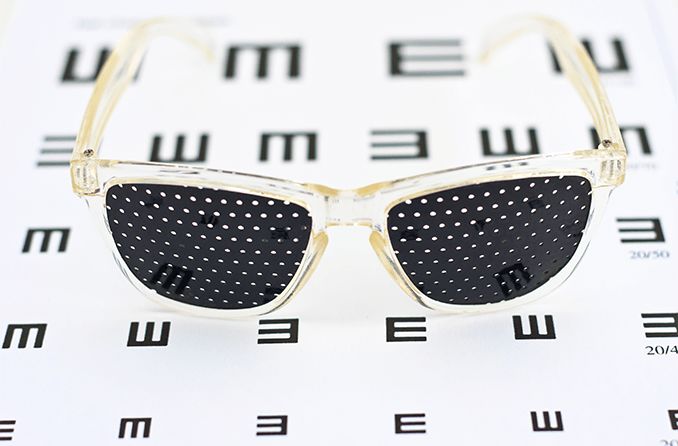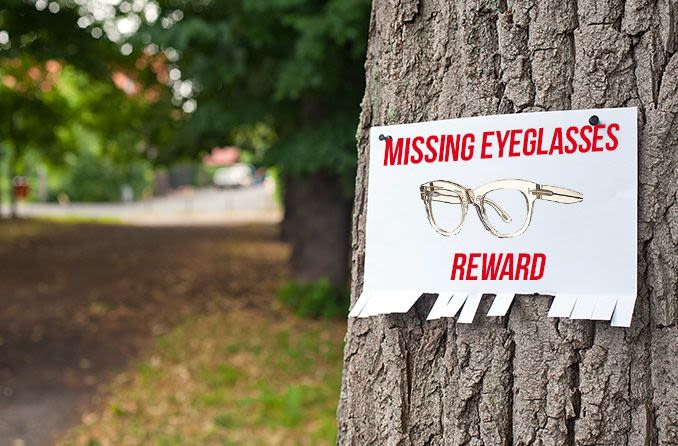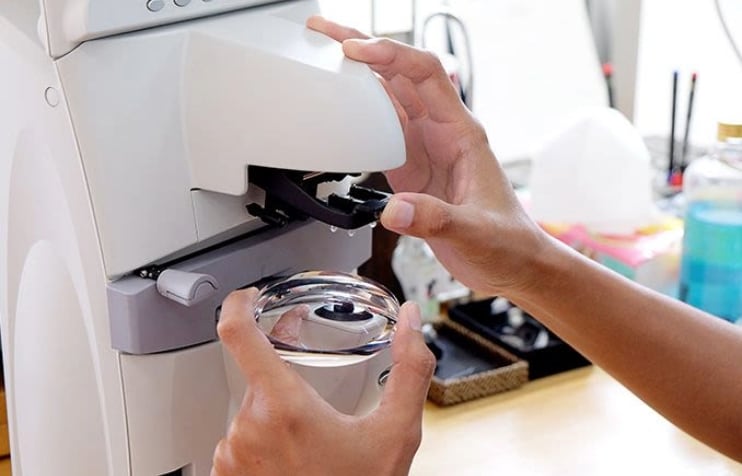If you have frequent headaches or eye fatigue, or feel like you have to squint to make text readable, you may need new eyeglasses.
There are a number of signs that your current glasses could be due for an update. Here are eight signs to look for:
1. Blurry vision
For blurry vision at any distance, a new pair of glasses may be able to help you see clearly again.
If the words in your books and text messages have started to blur, a good pair of reading glasses (which you don’t need a prescription for) could do the trick.
Progressive lenses are another great way to bring things back into focus, and keep your youthful appearance, but you’ll need to see your eye doctor about those.
If you’re nearsighted (also called myopia) but your glasses aren’t helping as much as they used to, you might need a new prescription to keep those distant objects in focus.
2. Headaches
There are plenty of vision-related reasons why you might be having headaches, including undiagnosed nearsightedness and an outdated prescription.
To make sure your prescription is correct, see your eye doctor for an exam.
There’s also a chance that your frames are to blame. If the temples (arms) feel like they’re pulling against the back of your ear, it can be uncomfortable enough to cause a headache.
Likewise, if the temples feel like they’re too tight against the sides of your head, it’s time for an adjustment.
Often, if there’s an issue with the fit of your eyeglass frames, see an optician near you. An adjustment to your frames can fix the fit of your glasses and end or reduce your headaches.
If your frames can’t be made to fit — let’s say you went through a growth spurt or got the wrong size to begin with — it’s time for new glasses.
3. Squinting at the screen
If you find yourself squinting at your computer monitor, smartphone or other digital devices, you may be experiencing computer vision syndrome (also called digital eye strain).
Consider wearing computer glasses: They help focus your intermediate vision and they’re designed to filter blue light, which may help improve visual comfort. When you wear computer glasses, the objects on your screen should be clearer. If you are still experiencing issues, try practicing the 20-20-20 rule: Every 20 minutes, look at something 20 feet away for 20 seconds.
4. Double vision
Frequent double vision can have serious implications. Your eye doctor will be able to get to the root cause of your symptoms. You could have crossed eyes (strabismus) or a more serious eye condition like keratoconus.
If your eye doctor says you have crossed eyes, your treatment probably will come in the form of a new pair of glasses, prescribed with more prismatic power than your current pair.
Prismatic power helps correct eye alignment issues and can stop you from seeing double.
5. Lens damage
Wear and tear on your glasses isn’t always just cosmetic. If the temples of your glasses stretch over time, they could loosen to the point that they don’t fit anymore.
While loose frames may not affect your ability to see through your lenses, scratches on your lenses can interfere with your vision and cause eye strain.
If you use hot water to clean your glasses, there’s a chance you’ve accidentally damaged your lens coating. Lenses with anti-reflective coating or photochromic treatment can make a big difference for your vision, so clean your lenses as instructed by your eye care professional.
6. Infrequent eye exams
Your vision changes as you age and so does your prescription. Getting an annual eye exam is the best way to stay on top of those changes and keep your glasses up to date.
In a routine comprehensive eye exam, your eye doctor will look for signs of vision issues and other health conditions using the following tests and more:
- Visual acuity test – You’ll read an eye chart to test the sharpness of your vision.
- Color blindness test – This test can detect possible eye health problems that affect your ability to see color.
- Ocular motility test – This tests your eye muscles to get to the root of any eye strain.
- Depth perception test – You might wear 3D glasses to try and point out which object on a page appears closest.
7. Career change
A new pair of glasses doesn’t just help you stand out at your new job. Glasses can actually help you get your work done more efficiently. There are a number of different lenses on the market that might be a better fit for your new venture.
An office job may call for anti-reflective lenses or computer glasses that can reduce the eye strain you would otherwise get from staring at a screen all day. Likewise, if you’ll be doing more physical labor, durable lenses with anti-scratch coating might serve you well.
8. Style update
There’s nothing wrong with getting a new pair of glasses for the sake of fashion. Treat yourself to some new frames or lenses that suit your style and the latest trend.
Don’t let old eyeglasses undercut your health, appearance or productivity. Book an eye exam to see if your glasses prescription has changed since your last visit and find a new pair of specs to help you see clearly again.
